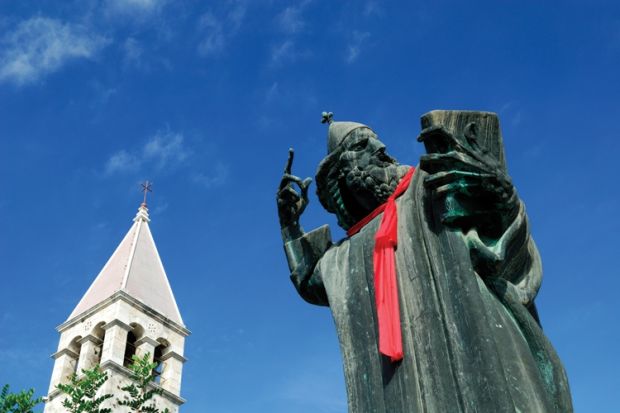The Croatian government is developing plans to significantly boost its university sector despite concerns about the quality of tertiary education in the country, which joined the European Union on 1 July.
Croatia’s economy has been stagnant or in recession since 2008, and the country will cut higher education funding by more than 3 per cent this year, according to the latest report from the European University Association’s Public Funding Observatory.
Meanwhile, a World Bank report published in June stated that higher education enrolments in Croatia remain below Organisation for Economic Cooperation and Development and EU averages.
However, Luka Juroš, sector manager for higher education operations and student support at the Directorate of Higher Education - a part of Croatia’s Ministry of Science, Education and Sports - told Times Higher Education that the government will expand state funding for higher education and research over the next few years. The higher education sector will also benefit from EU regional development funds that are now available to the country, he added.
Croatia will have access to a total of €11.7 billion (£10.1 billion) in EU investment funds over seven years if it can come up with suitable projects and programmes, according to the European Commission.
The country had already received €6 million from its EU pre-accession funds for higher education projects, which will complement state funding of €90 million over three years, Mr Juroš said.
He added that the money would be used to implement a new National Education and Research Strategy over the coming years.
A key element in this strategy will be to roll out a revised Croatian Qualifications Framework (CROQF), which will cover the entire education system. The framework will include a new national standard for university qualifications, which will improve quality and better address the needs of the labour market, Mr Juroš said.
“While we don’t want to reduce the autonomy of [universities], we want to work with them to ensure that a new standard of qualification is introduced,” he said.
Signing up to the new qualifications framework will not be obligatory, but it “will provide a seal of approval for [institutions] offering courses that adhere to the new CROQF standards, creating a natural incentive for them to be adopted”, Mr Juroš said.
It will also, he continued, help to meet employers’ expectations.
Bring on the students
The government also hopes that its reforms will help to get more young people through higher education. “We are aware that we need to grow the number of graduates in the country, particularly in maths, engineering, science and technology,” Mr Juroš said.
In collaboration with the World Bank, pilot funding programmes have been set up with the aim of increasing student numbers and widening access to public universities, Mr Juroš said.
He added that there were also plans to improve governance and management in universities, which would include the financial restructuring of institutions; to increase funding for research; and to boost the number of students from lower socio-economic backgrounds.
Not-so-golden ratios
However, there are those who think the reforms will not go far enough, and express particular concerns that student-to-teacher ratios for some subjects remain excessively high.
Siniša Zrinščak, a professor of social policy and sociology at the University of Zagreb, said: “The Croatian higher education system is still not very well developed. A lot of teachers have too many students. We need more staff, and space is also a problem.”
But, he added, “it is difficult to change this during an economic crisis”.
Croatia’s Agency for Science and Higher Education (ASHE), an independent body responsible for quality assurance, recently completed a re- accreditation process that found that enrolment numbers in faculties of business and economics were too high to permit high-quality teaching. Ratios were as high as 50 or 60 students to 1 teacher for some subjects, the agency discovered.
Although Mr Juroš conceded that such ratios could affect teaching quality, he said that the average across the country was 15 to 1.
“The issue of quality is complex,” he explained. “Some world-class teaching and research is carried out at Croatian institutions and the ministry wants to support this. However, we are also aware that there are some concerns regarding quality.”
Mr Juroš added that if ASHE proposed withdrawing its accreditation from a course, “the ministry will not hesitate to implement the proposal”. Several programmes had already been shut as a result of recommendations from ASHE, he pointed out.
